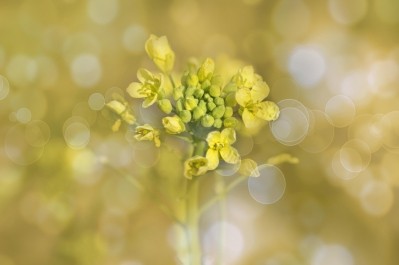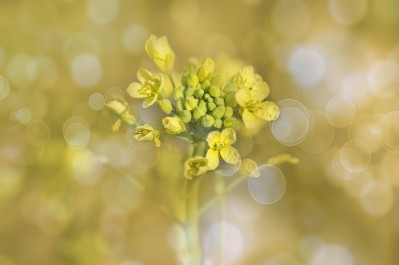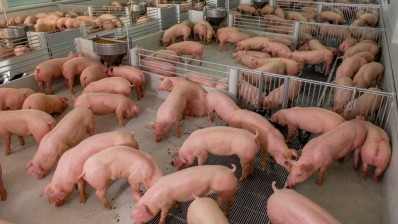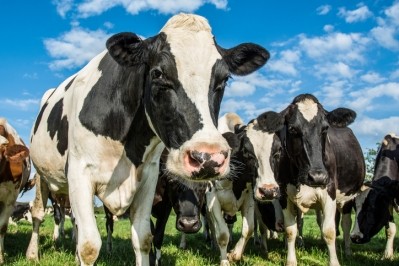Special Edition: Lowering feed's carbon footprint
US: Alt feed crop production to boost water, soil quality

The Forever Green Initiative at the University of Minnesota is an ongoing, high-efficiency agriculture project to research and develop alternative crop production systems along with feed and food crops for rotating or perennial production that improves producer productivity and profitability while boosting soil and water quality, according to the initiative.
The program is refining strains of several crops and exploring the potential for environmental improvement, it has been working with several plants including kernza, field pennycress, camelina, perennial sunflower, hazelnuts, elderberry, silphium, shrub willow, hairy vetch, perennial ryegrass, meadow fescue, winter barley and perennial flax.
The initiative is now working toward commercialization of several crops along with making a more complete assessment of potential environmental benefits, said Don Wyse, professor and co-director of the Center for Integrated Natural Resources and Agricultural Management.
The project was initially started as a way to improve the availability of perennial grasses, but has since expanded as a way to address environmental challenges in the state and provide new economic opportunities for feed crop and livestock producers, he said. The work has focused on developing winter annuals and perennials to fill the 'brown periods' when crops are not in the field.
“Corn and soybeans and these summer crops are only on the landscape for [a few] months, which makes the soil susceptible to movement in terms of erosion and movement of nitrate into water,” he told FeedNavigator.
Several of the crops also are being evaluated for their role in reducing the carbon footprint of feed crop production along with genomics and breeding agronomic elements, he added.
The project has attracted interest from of a range of commercial entities including larger companies and local brewers, he said. It provides a new marketing tool as crops can be raised to improve landscape health.
“Twenty-five years ago we started developing the 13 new crops we’re still developing,” said Wyse. “And we’re then connecting this work to the major food and energy use in the country – that is moving each of these as an enterprise, as a business.”
“This is the only program in the country taking the issue on in a big way,” he added. “Most programs focus on fixing the system with best management practices for corn and soy and most of the regulators say there’s no way that the state will meet its water quality goals without a new crop (system) that covers that brown period.”
Soil health improvements and feed crop production
Current annual feed crop production systems do not always maintain carbon storage in the soil, said Wyse.
“As soon as the farmer tills the soil in an annual system the carbon goes up, but we’re trying to figure out if we can capture carbon in that system,” he said. “It’s not going to be as good as the perennial system – but it will be as effective in keeping water in place and capturing nitrate and nitrogen.”
The new perennial and cover crops being developed are being assessed for their ability to retain carbon and nutrients, he said. The plants are also being examined for the ability to fix nitrates, nitrogen, sediment and phosphorus in place.
“We’re going through the studies to explore that these do capture carbon and fix it in the system – and if it would be possible to go through some kind of rotation,” he said.
Among the group of plants being evaluated some are perennial producers, while others would augment an annual production system, said Wyse. Camelina and pennycress are two of the feed crops being evaluated as cover crops for use with soybeans.
“The biggest issue with camelina is it matures later than pennycress – so to make it work it has to be in a relay [system],” he said. “You plant it in the fall then in the spring you plant soybeans no-till in the camelina. There’s a period of time that the camelina and soybeans grow together then, you come in as camelina matures and combine the camelina over the soybeans, which releases the soybeans.”
The process improves the production per acre, and has the potential to raise two marketable feed crops from the same acreage, he said. However, the overall yield of soybeans might drop in some years.
“What is the value of the camelina? The oil, protein and fiber? So a part of the program is working that into commerce and potentially as a feed source,” he said. “There are connections to the fish industry and interest in piglet feed or piglet diets because of the high omega-3 levels.”
Refining alternative crops
The program has been working with multiple species, some that were previously in development or used commercially and some that were not, said Wyse.
The first one to reach commercial stage was kernza, which has already been released on the market and some regional brewers have been using to make beer, he said. Producers also are working with the oilseed camelina, which can produce a protein meal for use in feed.
Camelina production is currently being tested by sugar beet producers as a way to hold soil in place once the crop has been harvested, he said. Once commercialized, pennycress also could be an option.
The research group also has been developing a line of pennycress that will be released commercially in the next few years and new lines of hazelnuts, he said. “We did the same thing with pennycress that the Canadians did with rapeseed, the only difference is we have the technology to it much faster – we’re cleaning up those lines,” he added.
Some species evaluated in the project, like silfium, have needed more development, said Wyse. The native prairie plant is being refined and is intended to provide a drought-tolerant, oilseed crop for producers in areas with sandy soil.
However, the advances in technology that allow the breeders involved with the program to move quickly include the ability to sequence the genome of plants, he said. The species being produced are all non-biotech strains capable of being used in an organic production system.
“We can identify a whole set of traits that would have been blind in a breeding program – disease resistance, oil quality – and bring them along,” he said. “Once you have a copy of the genome you can select a wide range of genes to bring along.”
Final assessments
Along with refinement of some of the crops being evaluated, there are still end-use and environmental questions to be answered, said Wyse.
The project is expanding its team members to focus on the commercial aspect and evaluate products that can be generated from the different species involved along with highlighting any remaining questions, he said.
This is not the first time that the use of cover crops has been suggested to producers, he said. “It’s never caught on because there is no economic angle.”
However, the ongoing evaluations of end uses for the new feed or food crops could provide that component, he added.










